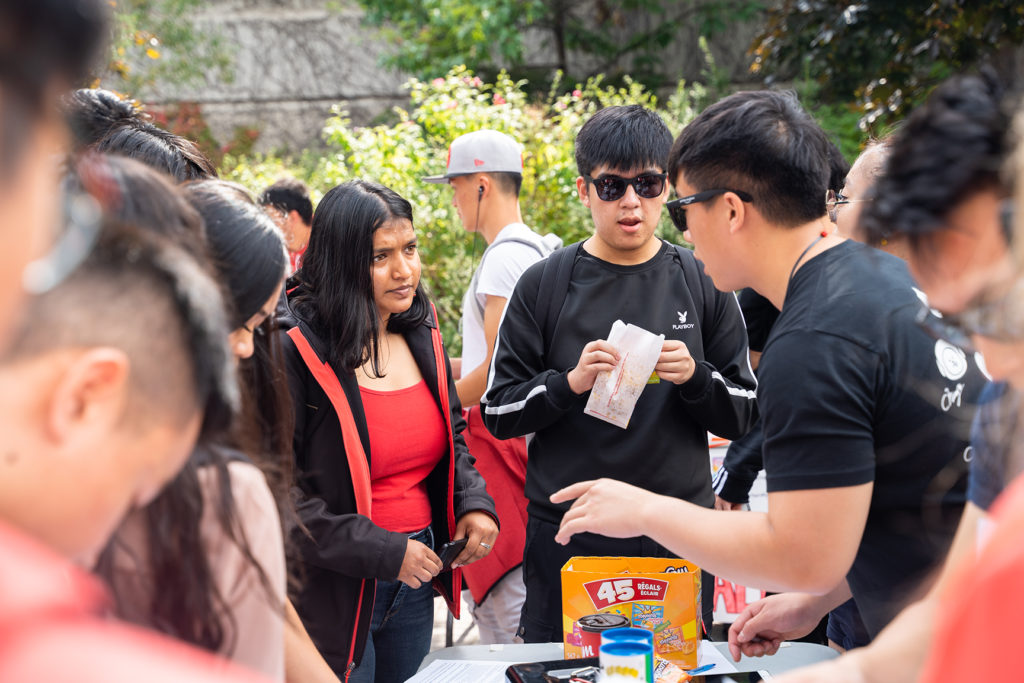
KEY PRINCIPLE
York University recognizes, within limits, the rights to offensive and controversial expression while securing the freedom not to listen, and the ability to protest.
Freedom of expression protects activity that many or most people may find disagreeable, disturbing, controversial, or deeply offensive. Just because expression is disagreeable, or offensive doesn’t mean it will necessarily be suppressed under the limits of free expression. Expression may well be hurtful and upsetting and be protected so long as it does not exceed the limits of freedom of expression at York University.
- Example: A protest in which some students advocated a political position that other students disagree with is still protected by freedom of expression. However, if the protesting students advocated genocide, engaged in violence or threats of violence, or promoted discrimination against an identifiable group, it would not be protected.
York University may limit the place, time, and extent of offensive and controversial expression to ensure that the freedom not to listen is protected, and that individuals who find the expression offensive are not forced to listen to it.
- Example: York University may limit where disturbing or controversial materials are posted on campus so that people seeking to avoid them are able to do so.
Any limitation on an individual’s freedom of expression owing to concerns about safety must be based on clear, compelling, and credible evidence. In other words, such concerns must be grounded in and have an objective basis in fact, rather than beliefs, fears, or feelings.
- Example: Threats, hazing, stalking, and harassment more generally (namely, engaging in a course of vexatious comment or conduct that is known or ought reasonably to be known to be unwelcome) are not protected forms of expression.
Offensive and controversial expression may make members of York University feel unsafe or concerned for their safety. Strongly and genuinely held subjective beliefs about safety may not, without an objective basis, reduce the scope of allowed expression.
Protests at York University
Protesting is an expressive activity, and the preservation of a free and open exchange of ideas and opinion includes a robust right to protest.
As with all forms of expressive activity, the freedom to protest is subject to limits, as above. Outside of those limits, peaceful protests and demonstrations have wide latitude in what and how they wish to protest. York University, as part of its responsibilities and commitments to all members of its community, may regulate the place and manner of a protest and may impose reasonable safety measures to protect protestors, event attendees, and the York University community more broadly. These measures may involve:
- setting up a perimeter for the contested event
- conducting bag checks of event attendees
- limiting the protest to specific locations or times
- limiting the use of sound systems or amplification
Limitations to the Right to Protest
The exercise of freedom of expression by protestors cannot obstruct other parties from engaging in their own expression. In other words, a protest is not a veto: protestors may not prevent others from exercising their freedom of expression, or their freedom to listen to a message being expressed.
- Example: Where a protest is being carried out peacefully, and it attracts a counter-protest in which the counter-protesters engage in acts or threats of violence towards the original protestors, the counter-protest will cease to be protected by freedom of expression and may be terminated by York.
A peaceful protest may not directly or indirectly obstruct, physically impede, or blockade an authorized York University event, exits to a university space, or other lawful activity. York University may regulate the place and manner of protest to ensure that they do not interfere with York University events.
A protest is also not entitled to a captive audience. A protest that seeks to force others to listen to its expression by, for example, blocking all entrances to a building or access to a space, is not protected. Furthermore, protestors cannot use their expression to prevent others from engaging in expressive activity, or members of the audience from hearing the speaker.
- Example: Protestors should not engage in coordinated chanting or use of megaphones with the intention of preventing counter-protestors from speaking. Instead, once the protestors have devoted a reasonable amount of time to advocating for their position, they should allow those with opposing views a reasonable opportunity to advocate for their own positions.
A speaker is entitled to communicate their message during their allotted time, and the audience is entitled to hear the message and see the speaker during that time. Individuals or groups engaged in protest or dissent should not substantially interfere with the speaker’s ability to communicate or the audience’s ability to hear and see the speaker
